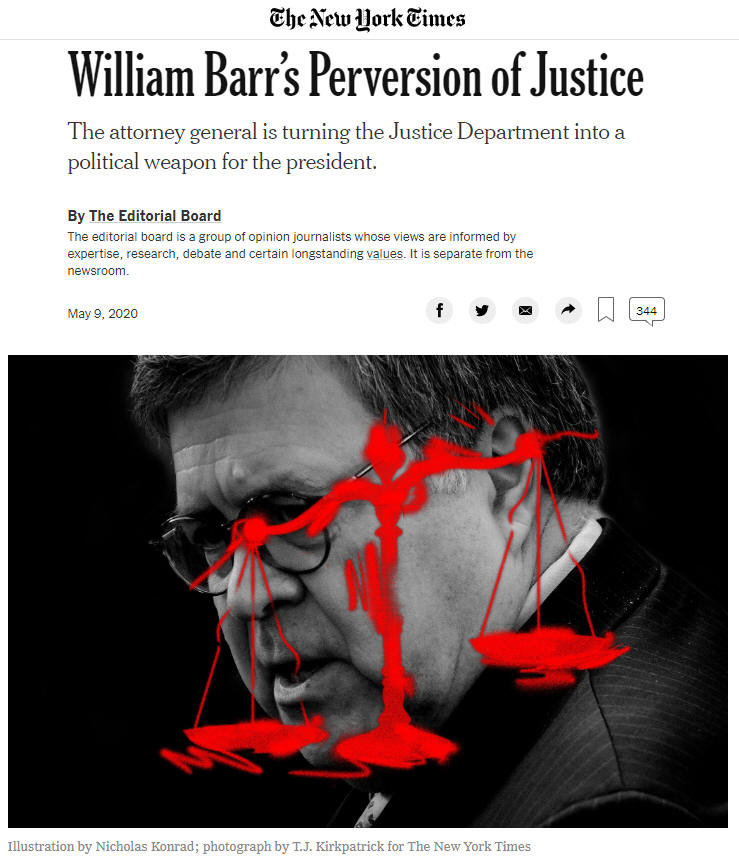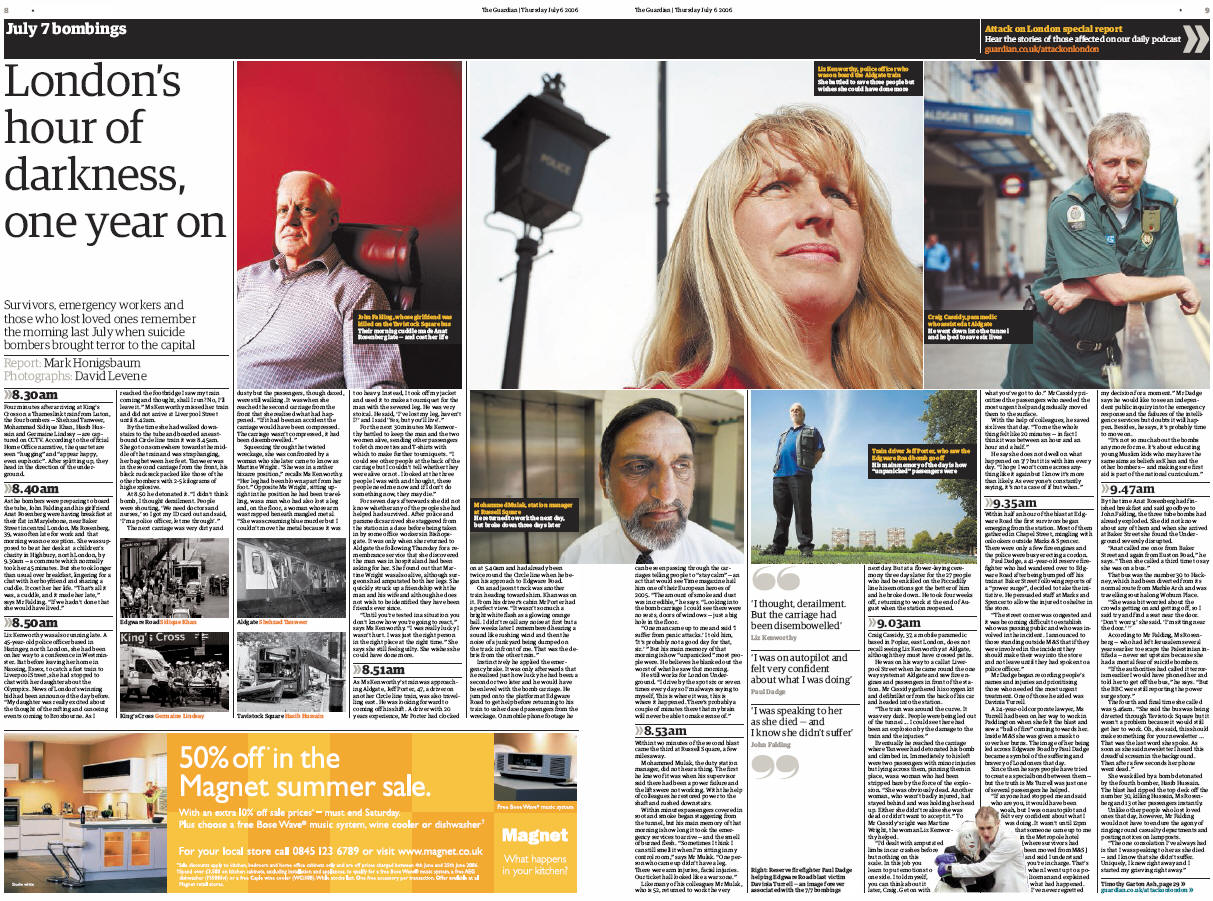|
learning > grammaire anglaise - niveau avancé
séquences
nominales
syntaxe, sens et valeurs énonciatives
N
+ 's +
N
=
Ngénitif
N
+ 's +
N
+ of +
N
reprise
d'un élément bien connu, repéré,
identifié
répétitif, rituel
(toile de fond, décor,
profondeur de champ,
"ça fait partie du paysage")
+
information présentée
sur le mode / la fiction
de l'inédit,
de la
nouveauté,
de la théâtralité
suspense,
effet d'annonce,
focalisation
(mise au premier plan)
William Barr’s Perversion of
Justice
the UK's
biggest celebration
of
contemporary art
Obama Condemns
Islamic
State’s Killing of Peter Kassig


The Guardian
Culture Hot Spots p. 5
2 September 2006

The Guardian
pp. 8-9 6 July 2006
Obama Condemns
Islamic State’s Killing of Peter Kassig
NOV. 16, 2014
The New York Times
By RUKMINI CALLIMACHI
GAZIANTEP, Turkey — Islamic State militants released a chilling
videotape on Sunday showing they had beheaded a fifth Western hostage, an
American aid worker the group had threatened to kill in retaliation for
airstrikes carried out by the United States in Iraq and Syria.
President Obama on Sunday confirmed the death of the aid worker, Peter Kassig, a
former Army Ranger who disappeared more than a year ago at a checkpoint in
northeastern Syria while delivering medical supplies.
Mr. Kassig “was taken from us in an act of pure evil by a terrorist group,” Mr.
Obama said in a statement from aboard Air Force One that was read to the news
media in Washington.
In recent days, American intelligence agencies received strong indications that
the Islamic State had killed Mr. Kassig, the group’s third American victim. The
president’s announcement was the first official confirmation of his death.
“Today we offer our prayers and condolences to the parents and family of
Abdul-Rahman Kassig, also known to us as Peter,” Mr. Obama’s statement said. The
president used the Muslim name that Mr. Kassig adopted after his capture, making
the point that the Islamic State had killed a fellow Muslim. He acknowledged the
“anguish at this painful time” felt by Mr. Kassig’s family.
The footage in the video released Sunday was of poorer quality than some of the
group’s previous, slickly produced execution videos.
The video shows a black-robed executioner standing over the severed head of Mr.
Kassig. Though the end result of the footage was grimly familiar, it was
strikingly different from the executions of four other Western hostages, whose
recorded deaths were carefully choreographed.
In the clip released early Sunday, the Islamic State displays the head of Mr.
Kassig, 26, at the feet of a man with a British accent who appeared in the
previous beheading videos and has been nicknamed Jihadi John by the British news
media. Unlike the earlier videos, which were staged with multiple cameras from
different vantage points, and which show the hostages kneeling, then uttering
their last words, the footage of Mr. Kassig’s death is curtailed — showing only
the final scene.
“This is Peter Edward Kassig, a U.S. citizen of your country. Peter, who fought
against the Muslims in Iraq while serving as a soldier under the American Army,
doesn’t have much to say. His previous cellmates have already spoken on his
behalf,” the fighter with a British accent says in the video. “You claim to have
withdrawn from Iraq four years ago. We said to you then that you are liars.”
Analysts said that the change in the videos suggested that something may have
gone wrong as the militants, who have been under sustained attack from a United
States-led military coalition and have faced a series of setbacks in recent
weeks, carried out the killing.
“The most obvious difference is in the beheading itself — the previous videos
all showed the beheading on camera,” said Daveed Gartenstein-Ross, a senior
fellow at the Foundation for Defense of Democracies, in Washington, and a former
director of the Center for the Study of Terrorist Radicalization. “This one just
shows the severed head itself. I don’t think this was the Islamic State’s
choice.” He added, “The likeliest possibility is that something went wrong when
they were beheading him.”
Among the things that could have gone wrong, analysts surmise, is that the
extremists did not have as much time outdoors as they did when they killed the
others. The United States announced soon after the first beheading in August
that they would send surveillance aircraft over Syria and residents contacted on
social media have reported seeing objects in the sky that they believe are
drones.
The first four beheadings were carried out in the open air, with a cinematic
precision that suggests multiple takes, filmed over an extended period of time.
Carrying out a similar level of production as surveillance planes crisscrossed
the skies above would result in extended exposure — heightening risk.
Another possibility, Mr. Gartenstein-Ross said, is that Mr. Kassig resisted,
depriving the militants of the ability to stage the killing as they wanted.
“We know that this is a very media-savvy organization, and they know that you
only have one take to get the beheading right,” he said.
An Indianapolis native, Mr. Kassig turned to humanitarian work after a tour as
an Army Ranger in Iraq in 2007. He was certified as an emergency technician, and
by 2012 he returned to the battlefield, this time helping bandage the victims of
Syria’s civil war who were flooding into Lebanon. He moved to Lebanon’s capital,
Beirut, where he founded a small aid group and initially used his savings to buy
supplies, like diapers, which he distributed to the Syrian refugees in Lebanon.
In the summer of 2013, he relocated to Gaziantep in southern Turkey, roughly an
hour from the border, and began making regular trips into Syria to offer medical
care to the wounded.
He disappeared on Oct. 1, 2013, when the ambulance he and a colleague were
driving was stopped at a checkpoint on the road to Deir al-Zour, Syria. He was
transferred late last year to a prison beneath the basement of the Children’s
Hospital in Aleppo, and then to a network of jails in Raqqa, the capital of the
extremist group’s self-declared caliphate, where he became one of at least 23
Western hostages held by the group.
His cellmates included two American journalists, James Foley and Steven J.
Sotloff, as well as two British aid workers, David Haines and Alan Henning, who
were beheaded in roughly two-week intervals starting in August. Mr. Kassig was
shown in the video released in October that showed the decapitation of Mr.
Henning.
The previous videos of beheadings produced by the Islamic State, also known as
ISIS or ISIL, appeared to be filmed in the same location, identified by analysts
using geo-mapping as a bald hill outside Raqqa. Each video was relatively short
— under five minutes on average — and included a speech by the hostage, in which
he is forced to accuse his government of crimes against Muslims, while the
masked killer stands by holding the knife.
By contrast, Mr. Kassig’s death appears in the final segment of a nearly
16-minute video, which traces the history of the Islamic State, from its origins
as a unit under the control of Osama bin Laden to its modern incarnation in the
region straddling Iraq and Syria. In one extended sequence, a mass beheading of
captured Syrian soldiers is shown, filmed with long close-ups of details, like
the shining blade of the executioner’s knife, mirroring the high production
quality of the first four beheading videos.
The part showing Mr. Kassig’s body is amateurish compared with both the footage
of the soldiers being killed and previous executions of Westerners.
“The final Kassig execution section is definitely different from previous
videos,” said Jarret Brachman, a counterterrorism expert who advises the United
States intelligence community. The “message to President Obama from Jihadi John
is sloppy, jumbled and redundant. His joke about Kassig having nothing to say
seems like a defensive way of covering up the fact that they don’t have a video
of his actual beheading or weren’t able to make one.”
In the months leading up to his death, Mr. Kassig seemed to know the end was
near.
In a letter to his parents smuggled out this summer, he described his fear: “I
am obviously pretty scared to die but the hardest part is not knowing,
wondering, hoping, and wondering if I should even hope at all,” he wrote. “Just
know I’m with you. Every stream, every lake, every field and river. In the woods
and in the hills, in all the places you showed me. I love you.”
Correction: November 16, 2014
An earlier version of this article misidentified the country where Peter Kassig
went in 2012 to help care for those wounded in and those living as refugees from
Syria’s civil war. It is Lebanon, not Libya.
Karam Shoumali contributed reporting from Gaziantep, Turkey, and Michael S.
Schmidt from Washington.
A version of this article appears in print on November 17, 2014, on page A1 of
the New York edition with the headline: Obama Confirms That ISIS Killed Third
American.
Obama Condemns Islamic State’s Killing of
Peter Kassig,
NYT,
16.11.2014,
http://www.nytimes.com/2014/11/17/world/middleeast/
peter-kassig-isis-video-execution.html
Related
Kitty Empire's artist of the week
https://www.theguardian.com/music/series/
kitty-empires-artist-of-the-week
Alexis Petridis's album of the week
https://www.theguardian.com/music/series/
alexis-petridis-album-of-the-week
Mark Kermode's film of the week
https://www.theguardian.com/film/series/
mark-kermode-film-of-the-week
Voir aussi > Anglonautes >
Grammaire anglais
explicative - niveau avancé
formes nominales
formes nominales > pronoms
|